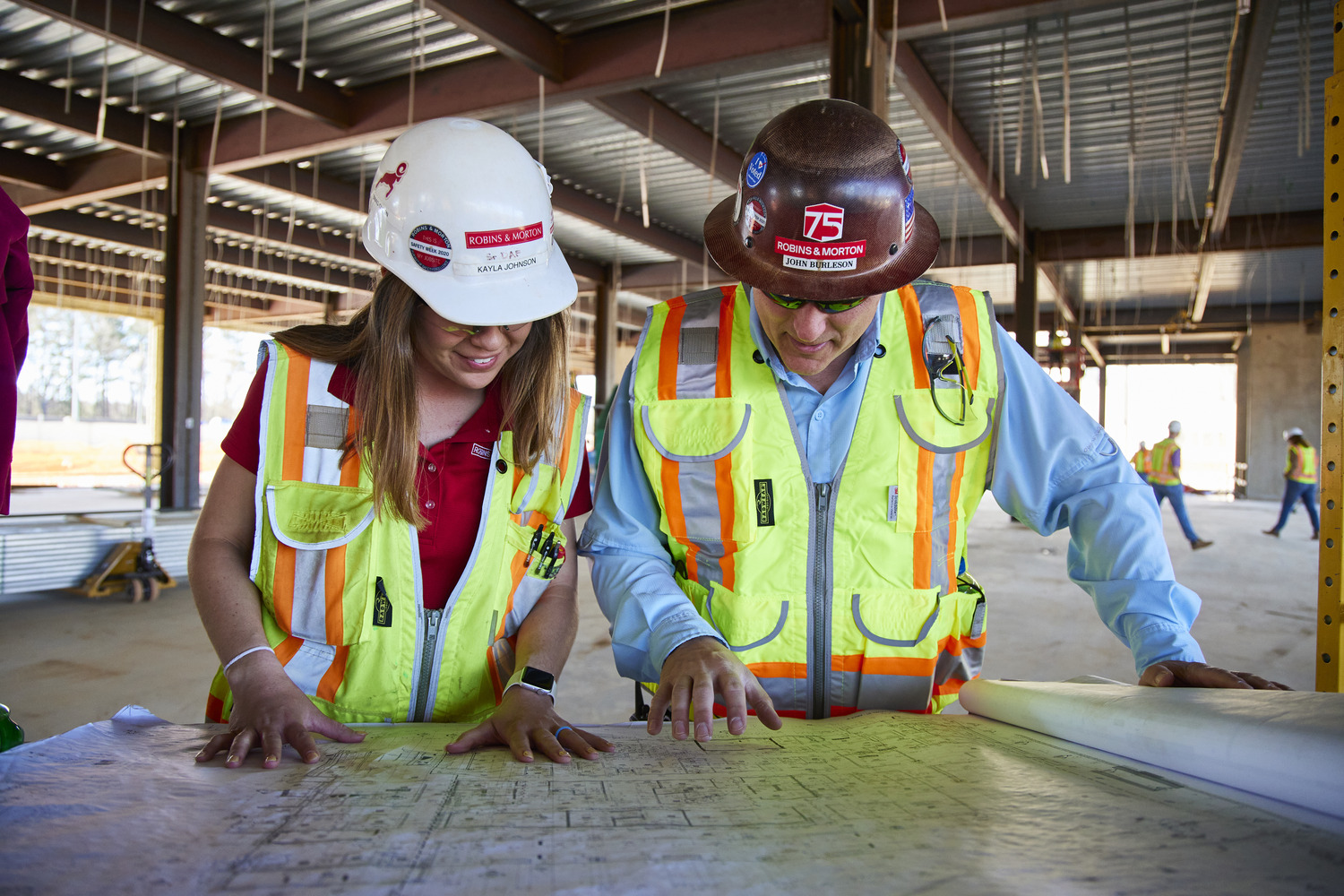
By: Heather Gallagher, Project Manager
Between the hours of 7 a.m. and 6 p.m., I’m a project manager with 17 years of experience in the construction industry, currently working on several healthcare projects. At home, I’m “mom” to two boys.
My oldest will be graduating from high school soon and is at the stage of choosing his future career path. As I help him make this decision, I wonder if he would know about the opportunities available in construction if he hadn’t grown up around it.
When we talk about increasing interest in construction careers, we recognize that awareness is low for many high-schoolers, but what’s especially alarming to me is how much lower that awareness is for young women.
Speaking from my educational upbringing, and the education of many of my female co-workers, it was pure happenstance that we ended up working in the construction industry. It’s not unusual to hear that many of us started our studies in adjacent industries, such as architecture and engineering, but we stumbled our way into a construction management class that changed us forever.
Among the conversations surrounding career planning, STEM (science, technology, engineering, and mathematics) careers are often recognized as the gold standard for what young people should consider for their future. STEM-categorized employers are also vocal about the need to attract more female workers. Unfortunately, construction rarely makes the list of encouraged careers for women. Why is that?
If you search “STEM,” you’ll likely get a list that includes careers in mathematics, biology, chemistry, engineering, computer science, information technology and robotics. But when I think of my career in construction, I see elements of all those subjects in my work daily.
Science – physics, chemistry, biology – is foundational to construction. We work closely with engineers and consultants to determine soil viability, floor weight requirements, and building envelope integrity. We use advanced math to manage budgets, calculate load weights for cranes, and determine the perfect angles for site grading.
Technology is also ever evolving and something that’s becoming a necessity in construction to offset the lack of tradespeople. On any given day, we may be using a drone to perform a site elevation inspection or a laser scanner to determine if there are undocumented conditions in an existing building.
Construction is exciting, complex, fast-paced and calls on my ability to problem-solve at a moment’s notice.
Clearly, I’m passionate about my work, and we must do better in opening this door to young women as an option for their future. At a recent conference, the speaker said, “Construction isn’t male dominated, it’s just male populated,” and I think that phrase characterizes our dilemma best.
The responsibility to create a more diverse workforce is weighty, so we ask what more we can do. They’re small steps, but we can intervene early – show up to career days at schools, work with our local National Association of Women in Construction (NAWIC) chapter to plan a Block Kids event, and be willing to mentor that high school student who is looking for an internship but isn’t sure where to start. The most important thing we can do is remain visible – leading, mentoring, sharing our experiences, and prioritizing the development of the next generation.
When we talk to students about STEM careers, especially young women, let’s make an effort to include construction. By openly discussing the variety of employment opportunities, job security, transferrable skills, and available career growth, we’re placing careers in construction among the coveted. It may not change the world immediately, but it’s a great place to start.

